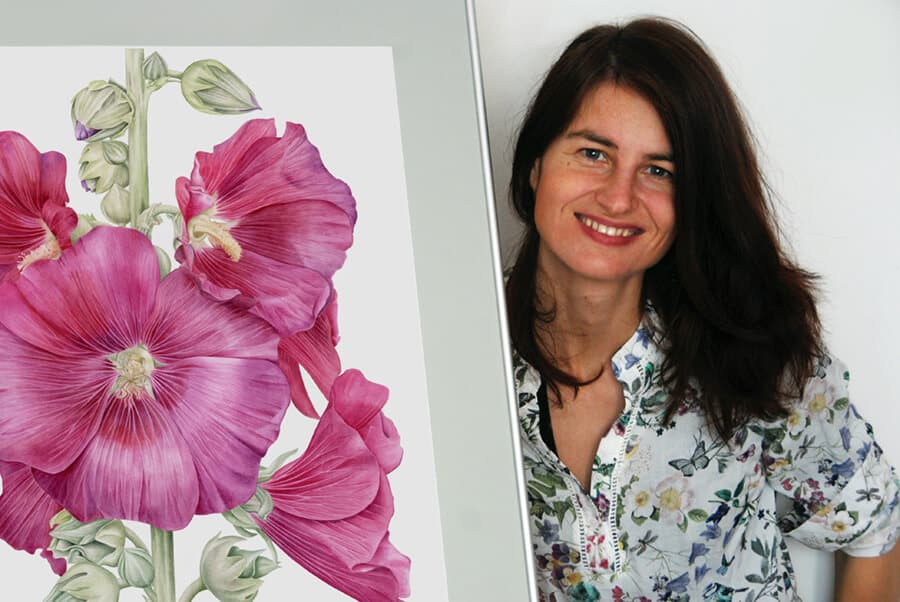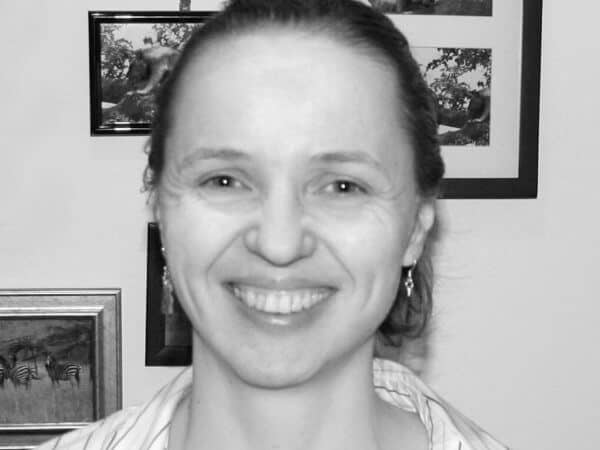From her childhood in a village, her fine art, her experience as a landscape architect, illustrating children’s books, her exhibitions and the significance of money. In this first part of the interview we discuss all this and more with Pavlina Kourkova.
Ms. Kourkova, first of all please tell us about your childhood and growing up years.
I spent my childhood in a small village close to Jihlava, a town situated in Bohemia-Moravian Highlands. I was surrounded by the beautiful nature of local meadows, hills and forests. As children, my three sisters and me spent a lot of time playing outside.
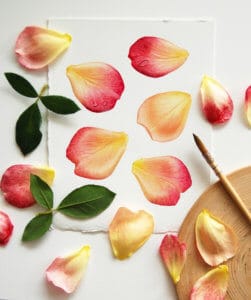
I remember that, already as a child, I liked to observe small details on leaves and flowers. We also used to go for walks together with our parents. I often brought home a small thing – a stone, a leaf, a flower or even a pinecone. I actually do it to this day.
I’ve also loved painting since childhood. I was more of an introverted child and I spent a lot of time just sitting and painting. When it came to watching fairy tales, I brought my sketchbook and painted my favourite characters in it. I remember being a little angry that they were moving too fast for me to paint.
Your work truly represents and characterises fine art. Tell us about the motivations that aided you to lead yourself into it?
I never thought of painting as something I wanted to make a living from. I felt it more like an integral part of me, a way of expressing myself and a way of sharing my feelings with other people.
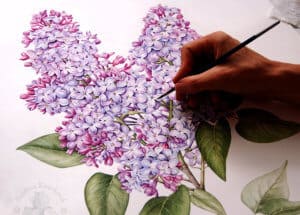
I remember saying: “All I need is a table, a window and a paper.” My love of nature, especially for flowers, reflected in my later studies. I studied biology and garden and landscape architecture.
While working in the UK as a landscape architect, I got to botanical art and totally fell in love with it. I started painting my ‘findings’ from the walks and it became a great way of sharing my joy from observing the beauty of nature with other people.
I love what I paint and I am happy when the people can feel it from my paintings. I love the moment when a painted object on a paper comes to life, from individual small brush strokes. I paint with respect to painted subjects.
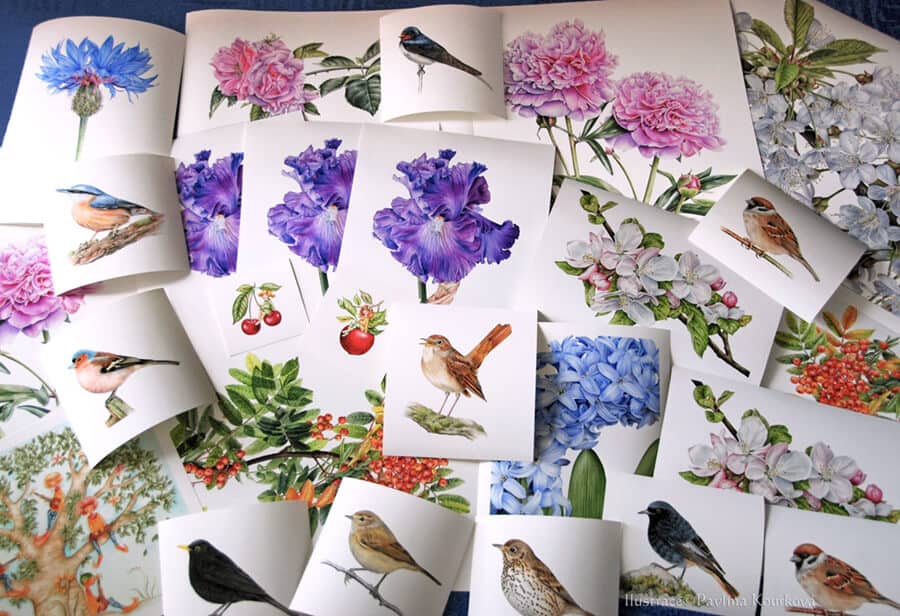
The Netherlands and the UK
Tell us about your experience as a landscape architect in the Netherlands and Britain.
In the Netherlands, I studied landscape architecture as a part of the Socrates-Erasmus programme. Wageningen University is the only university in the Netherlands that specifically focuses on the theme ‘healthy food and living environment’.
We focused on designing sustainable solutions for important landscape challenges such as climate change, energy needs, health and urbanisation. Their approach to landscape architecture is very complex.
In Britain, I worked as a landscape architect in a small family company on different projects. We worked on public landscapes and urban design, as well as on private parks and gardens or tree and garden plant surveys. We co-operated also with The Prince’s Foundation for the Built Environment on several projects.
The Netherlands and Britain are both coastal states with similar climatic conditions, so the use of plants for designs is more or less the same.
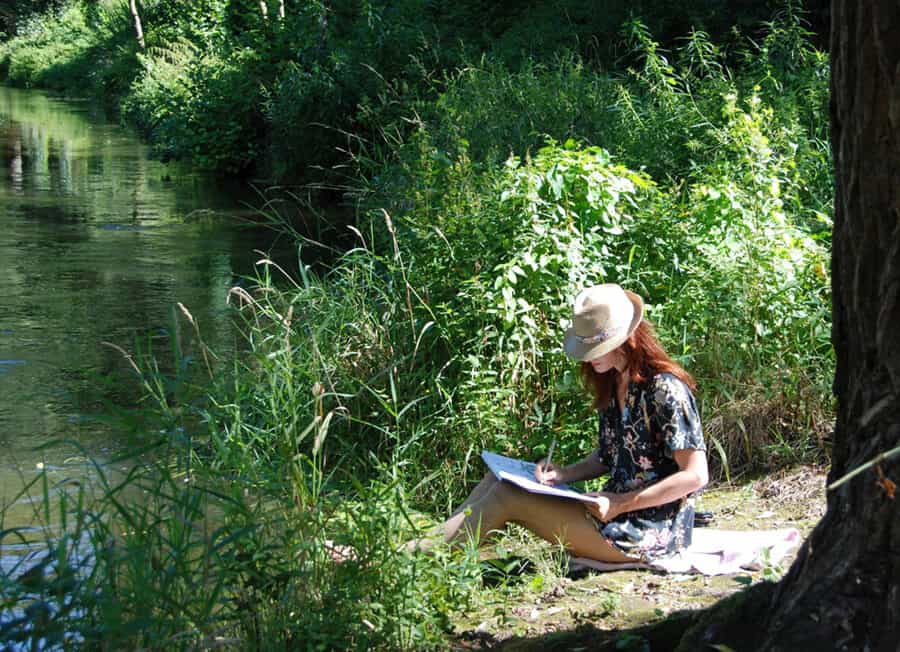
From your personal experience how are the Dutch culturally different from the British? In which country did you enjoy working more?
I enjoyed staying in both countries. I came to Holland as a young student and lived a classic student life there. To live and study abroad was a completely new experience for me, until then I lived only in my country and always stayed abroad for only a short time.
It was a beautiful free and joyful period. Because Wageningen University is world known, a lot of international students come for internships there. Almost half of the students who study for a master’s degree are foreigners.
This leads to a large international community in Wageningen and so I could meet students from all around the world. Then I went to work in England and here it was also very nice and interesting.
It was actually my first job after graduating. At first I worked in Canterbury, a lovely historic town well known for its beautiful cathedral, that was one of the most important centres of pilgrimage in Medieval England.
Then I moved to Oxford, where I lived in a very quiet nice place near the river, where I often went for walks. I can truly say that in Holland and also in the UK I met mostly very nice, open and friendly people. Both experiences were great for my further life.
Becoming a Bookworm
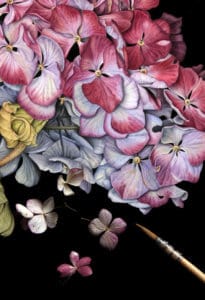
Please tell us about your work on children’s books.
I really enjoyed painting for children. When I received my first offer to illustrate a children’s book, I was very happy to accept it. It was actually the beginning of my painting career.
Before that, I painted a lot for myself in my free time. The themes were changing during the time but when the offer came, I was drawing mostly different fairy-tale creatures, mainly various herb elves and fairies.
The dreamy and fantasy world of fairytales is beautiful and I think it was actually my time spent in England, which strengthened that within me even more. It is a country very rich in ancient stories and storytellers.
I also liked that I could use my illustrations to help children develop their imagination. I remember that as a child I also enjoyed looking through fairy tale books and I really liked when there were a lot of beautifully coloured illustrations.
Painting fairy motives was a very nice period that lasted several years and I like to remember it.
Early Mornings
Please also tell us about the work you do for packaging of natural products.
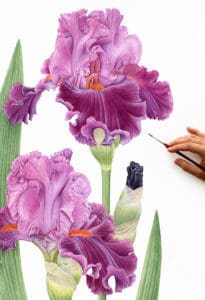
When I came back from England to the Czech Republic, I continued to work here for about two years as a landscape architect. At that time, however, I was increasingly attracted to painting.
I got up early in the morning and painted before I went to work. And then as soon as I got back from work, I sat down at the table and painted again until late at night. I was always looking forward to the weekends, when I would have two whole days just to paint.
When I moved in with my boyfriend, I decided to try to make a living by painting. I contacted several companies that manufacture herbal products – teas and tinctures. And then I started working for some of them.
I painted pictures on tea boxes and also labels on the small bottles for herbal tinctures. It was also a nice period that lasted several years. Today, I do this kind of work just exceptionally, but it is always nice and a bit nostalgic to see teas or tinctures with my illustrations in the shops.
What are your other works?
As I mentioned before, I illustrated children’s books and painted for herbal companies. I was also commissioned to work for various other customers.
These were usually one-off small projects, for example the illustrations for kindergartens, children or professional magazines and articles focused on nature, or for various local producers.
I co-operated also with the Institute of Botany of the Academy of Sciences and made some illustrations for their magazine. Otherwise, I use my own illustrations for various author’s products – jewellery, cotton bags, postcards, small magnets or mugs.
Together with my partner we made wall calendars with birds, flower fairies and children’s illustrations. He added his lovely poems to my illustrations.
They were designed mainly for children but seem to be liked also by adults. But all of these are more of my side activities; my main focus is on painting artworks for sale. I devote most of my time to that and I still want to improve in it.
Showing Your Work
Have you at any time held exhibitions of your works or are you planning to in the foreseeable future?
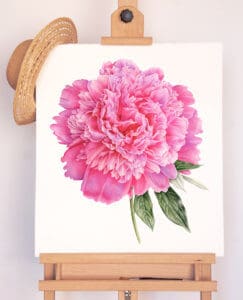
Yes, I take part in international exhibitions abroad every year. The first time was in 2018, when I was invited by Russian Botanical Artists at their annual international exhibition in Moscow.
The exhibition was called Plants. Myths and Legends. I exhibited several paintings there and held a masterclass on a large-scale botanical illustration.
In 2019, I participated in the largest international exhibition of botanical art in the world, called Plantae 2019, which takes place in London. Last year I also exhibited in Seoul, South Korea, where my painting Tulips won the Honourable Mention Award.
This year I again participated in the Plantae 2020 exhibition in London, which due to the coronavirus took place only online. The same situation is with this year’s The Fourth New York Botanical Garden Triennial. This is a traveling exhibition and if the situation is favourable, the artworks will travel to various US cities next year.
I would like to continue exhibiting in different countries in the coming years. It is always nice to meet people with a similar interest and seeing the artworks in person is very inspiring and motivating.
Living In A Material World
Entirely correctly, you are known to have said “money cannot buy health, true friendship, inner well-being, love and many other things that are important for the feeling of personal happiness”.
Would you elaborate on this and do you actively think about this maxim on a day-to-day basis?
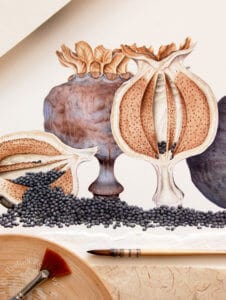
Yes, I remember saying that in one interview. And I really perceive it that way and I often realise it. Unfortunately, today’s society is mainly focused on great achievements and making money. I don’t think that’s entirely good.
Money is important for living, in the society, as it is set up you can’t really live without it. But you don’t need a lot of money to live a fulfilling and satisfying life.
There are things we will never buy with money. Whether it’s love, health or true friendship. My experience is that it is the people who own the least that are often the happiest.
I think it’s important that everything is in balance. I try to live in harmony with my surroundings, with nature, family, friends and the people I meet. We all are part of one whole. It is up to each of us in what world we will live.
How much in touch are you with the material world and how much do ‘things’ mean to you?
I am in contact with the material world like any other person. But I know what you probably mean – how important the material things are to me. Yes, they are, but only to a certain extent. It’s similar to money. They are important for one to be able to live and function normally.
It would not be possible without them. On the other hand, I don’t think it’s good to ‘chase’ things, to live only for them. Things themselves, like money, will not bring inner wellbeing and happiness to anyone.
At the same time I do appreciate the things that surround me, they all have their own presence. When I was younger, I enjoyed going to junk shops – they were full of all sorts of things.
They all had a story. I often wondered what their path was before they got there. And from time to time I bought something, just for the thing itself.
Photos: From the Archive of Pavlina Kourkova
Starting new careers can be tough, but during the last year it has been even tougher. For those that have endured, there has been opportunity:
Support us!
All your donations will be used to pay the magazine’s journalists and to support the ongoing costs of maintaining the site.
Share this post
Interested in co-operating with us?
We are open to co-operation from writers and businesses alike. You can reach us on our email at [email protected]/[email protected] and we will get back to you as quick as we can.
